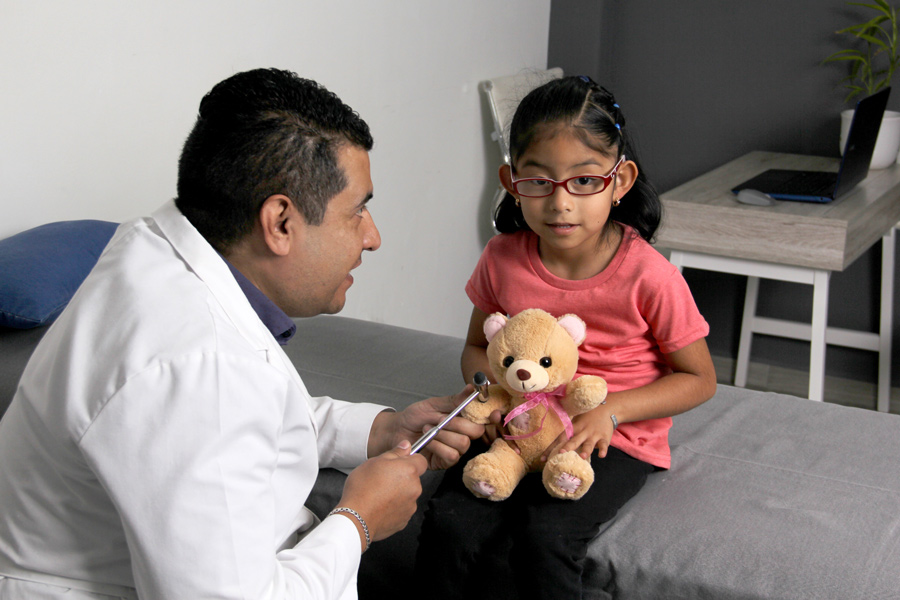- Social stigma surrounding autism spectrum disorder (ASD) means that parents can be hesitant to meet with doctors to discuss their children’s needs.
- Artificial intelligence and machine learning are helpful tools in the early stages of ASD detection.
- Mr Naga Simhadri Apparao Polireddi at IKON Tech Services LLC, USA, and his collaborators propose a chatbot to bridge the gap between patients, their parents, and physicians.
- The researchers also use fuzzy classifiers to evaluate the accessibility of private and government websites, empowering people with disabilities.
Fuzzy logic is an artificial intelligence (AI) and machine learning (ML) technology that can identify elements in a dataset that are similar but not quite identical. It can approximate string matching – locating patterns within a larger text or ‘string’ – so we can deal with imprecise or incomplete data. This is often the case in real-world situations. For instance, engineers use fuzzy logic for gear shifting in cars with automatic transmission. In medicine, fuzzy logic can help doctors make accurate diagnoses when a patient’s data is incomplete and a disease’s symptoms are vague. Fuzzy logic can also be used in financial risk assessment models that depend on subjective assessments and expert knowledge.

Fuzzy classification uses fuzzy logic to group elements into classes known as fuzzy sets. Fuzzy classifiers are used in natural language processing (NLP) and neural networks to imitate how a person makes decisions. NLP’s advanced machine-learning algorithms enable chatbots to learn human languages.
Mr Naga Simhadri Apparao Polireddi at IKON Tech Services LLC, based in the USA, and his co-authors explain how artificial intelligence and machine learning can be used to help detect autism spectrum disorder (ASD). He proposes a chatbot based on fuzzy classifiers to bridge the gap between patients, their parents, and physicians, enabling interactions between an ASD patient and their doctor. The researchers also use fuzzy classifiers in their evaluation of private and government websites’ accessibility for people with disabilities.
Autism spectrum disorder
Autism spectrum disorder (ASD), often referred to as autism, is a neurodevelopmental condition that affects how the brain functions. People with ASD frequently have issues with communication and social interaction. They can display repetitive and restricted behaviours and may have different ways of learning or moving. Autism ranges from mild impairments, with those affected living practically normal lives, to serious conditions requiring lifelong care. The impact of autism is highly variable, making it a spectrum disorder.
People of all ethnicities, genders, and socio-economic backgrounds can have ASD. Autism begins in childhood, often becoming apparent in children under five years, and continues through adolescence into adulthood. While autism can be a lifelong condition, a variety of treatments and services can improve symptoms and everyday functioning. Early detection is essential for the optimum development of people with ASD.

In the USA, babies and young children are screened for developmental delays and disabilities during their regular well-child doctor visits. This contributes to one in 59 children in the US being diagnosed with autism. In India, it is estimated that one in 100 children display autistic traits, but the social stigma surrounding ASD means that parents are afraid to meet with doctors to discuss their child’s needs. This hinders screening and makes early detection of ASD challenging. The increased availability of the internet and smartphones in developing countries means chatbots can be a useful tool for early screening, helping doctors and parents decide if a meeting is necessary.
An autism prediction chatbot
Polireddi explains how this novel autism prediction chatbot uses ML algorithms and a database created in an Excel spreadsheet. The conversational bot is fine-tuned so that it communicates effectively with the user.
It requires a touchscreen tablet with a camera so that the child can interact with the dashboard. Images can be used in chats with the patient, and the conversation is stored for use by the physician. Parents and carers can upload videos of their children in different situations so specialists can screen for ASD using video evidence instead of questionnaires.
This interactive chatbot is designed to convey emotions as it interacts with its young users.
The bot is created to facilitate interactions between a child with ASD and their doctor. It can even chat with the child at times when the doctor isn’t available. This interactive chatbot is designed to convey emotions as it interacts with its young users. Using decision-tree architecture supported by fuzzy classifiers, it offers personalised responses adapted to reflect the patient’s mood. The ASD chatbot can help reduce the burden on parents and carers. It also provides weekly summaries of the patient’s mental condition and emotional state to support doctors in their decision-making.
Web accessibility for everyone
If these chatbots are to be used to their full advantage and benefit health care, we need to make sure that websites are accessible to everyone, regardless of their cognitive or physical abilities. Polireddi explains that even though web accessibility is guided by principles and standards such as the Web Content Accessibility Guidelines, people with disabilities still face web accessibility barriers. Through a retrospective analysis of websites, he and his collaborators examined the impact of technological advancements in web construction on access for people with impairments.

The researchers explore the long-term impacts of accessibility-related modifications in websites. They evaluate website accessibility using the Web Accessibility Barrier (WAB) score, which quantitatively measures the content accessibility of websites for people with disabilities. A random category list was created using a database of the top 500 graded webpages. WAB scores were recorded for a sample of websites from 1997–2002 and websites from 2018–2022.
A baseline for comparison
The US government websites must adhere to accessibility requirements, so the researchers used the WAB scores from 22 US government websites as a baseline for comparison with the sample websites. Scores were analysed using ANOVA (analysis of variance) to find out if significant differences occurred, followed by Tukey’s honestly significant difference (HSD), a pairwise comparison method, to find out exactly where the differences lie.
Web accessibility empowers people with disabilities, enabling them to participate in social activities, education, and employment.
The researchers found that from 2015 to 2020, the mean WAB scores remained relatively stable. They observed some non-government websites becoming less accessible over time, but even though the US government websites are becoming more complex, they remain accessible to users with impairments.
Web accessibility empowers people with disabilities, enabling them to participate in social activities, education, and employment, as well as accessing vital government and healthcare services. In this digital age, web designers have a responsibility to ensure that everyone, regardless of ability or disability, has equal access to information.

What inspired you to apply AI and ML in the form of a chatbot for autism?
Early intervention and timely assistance: AI and ML, particularly the use of a fuzzy classifier, can aid in the early detection of ASD traits and provide timely assistance. Early intervention is crucial for improving outcomes for individuals with ASD, and a chatbot can serve as an initial point of contact for screening and offering resources.
Reducing stigma and promoting self-service: Chatbots provide a private and non-judgmental space for individuals to seek information and support. By promoting self-service through an AI-driven platform, I aim to reduce the stigma associated with seeking assistance for ASD-related concerns.
Addressing resource gaps: There are often resource gaps in the availability of trained professionals and support services for ASD. An automated chatbot can serve as a supplementary resource, helping to bridge gaps in the provision of information and assistance.
Research and innovation in autism support: I seek to contribute to the growing field of research and innovation in the application of AI and ML to support individuals with ASD. By exploring the effectiveness of a fuzzy classifier within a chatbot framework, I aim to advance the understanding of how technology can be leveraged for positive outcomes in the ASD community.
What plans do you have to further develop the chatbot for ASD?
Continuous learning and adaptation: My goal is to implement mechanisms for continuous learning and adaptation within the chatbot. This involves incorporating feedback from user interactions, updating the fuzzy classifier based on new data, and ensuring that the chatbot remains responsive to evolving user needs and preferences.
Integration of advanced ML techniques: Explore and integrate advanced machine learning techniques to enhance the chatbot’s capabilities. This could involve incorporating natural language processing advancements, sentiment analysis, and more sophisticated fuzzy logic algorithms to improve the accuracy of the classifier and responses.
Multimodal interaction: Expand the chatbot’s capabilities to support multimodal interactions, including text, images, and possibly voice inputs. This can enhance the user experience and provide additional channels for individuals with ASD to express themselves effectively.
What plans do you have to extend the web accessibility research?
Comparison with international standards: To enhance the global applicability of the research, there are plans to compare web accessibility standards and practices in the USA with international benchmarks. This comparative analysis can highlight areas of alignment and divergence, contributing to a more holistic understanding of web accessibility on a global scale.
Implementation of accessibility training programmes: Plans include the development of web accessibility training programmes aimed at educating web developers and designers on creating universally accessible websites. Training initiatives can contribute to the widespread adoption of accessibility principles.
What has been the most rewarding outcome of this work?
Web accessibility evaluation: The most rewarding outcome of the web accessibility evaluation research has been the identification of specific areas of improvement in both private and government websites. By leveraging the fuzzy classifier model, the research has not only provided a comprehensive assessment of the current state of web accessibility but has also paved the way for targeted interventions and enhancements.
Automated chatbots for ASD: The most rewarding outcome of the research on automated chatbots for individuals with ASD lies in the potential to enhance operational support and self-service. The development of a fuzzy classifier-based chatbot signifies a step toward more personalised and adaptive interactions, catering to the unique needs of individuals on the autism spectrum.
Empowering individuals: Both research endeavours aim to empower individuals, whether it be by providing accessible online experiences or offering tailored support through innovative chatbot solutions. The empowerment of individuals with disabilities is a deeply rewarding outcome.
Informing policy and practice: The outcomes have the potential to inform policy discussions and influence best practices in both web design and support services for individuals with disabilities. The research can serve as a valuable resource for policymakers, developers, and service providers seeking to enhance accessibility and support.
Fostering awareness: Both papers contribute to fostering awareness about the importance of accessibility in web design and the potential of AI-driven solutions for supporting individuals with ASD. Raising awareness is a crucial step toward creating a more inclusive and understanding society.










